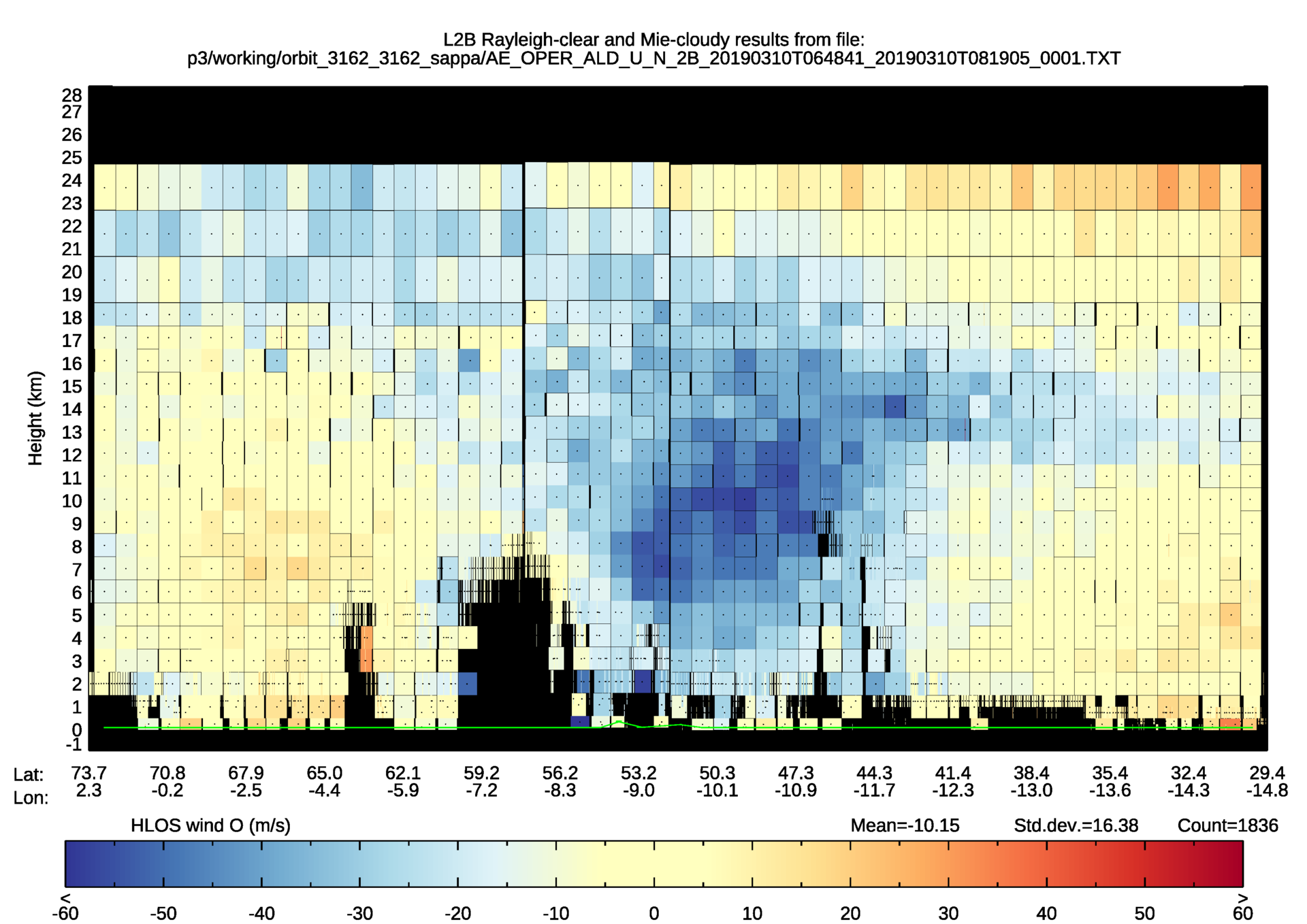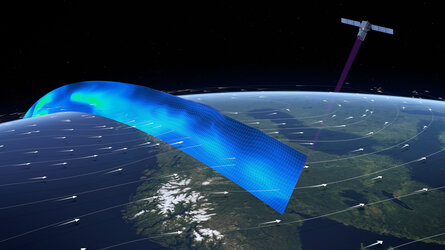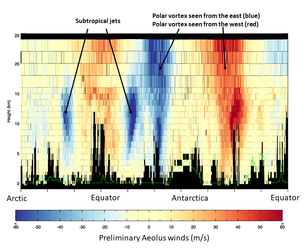Aeolus well on the way to improving forecasts
Assessing the accuracy of data being returned by completely new technology in space is a challenging task. But this is exactly what engineers and scientists have been dedicating their time to over the last months so that measurements of the world’s winds being gathered by Aeolus can be fed confidently into weather forecast models.
Carrying breakthrough laser technology, the Aeolus satellite – an ESA Earth Explorer mission – was launched in August 2018.
Its novel Aladin instrument, which comprises a powerful laser, a large telescope and a very sensitive receiver, measures the wind by emitting short, powerful pulses of ultraviolet light down into the atmosphere.
It is the first satellite mission to provide profiles of Earth’s wind globally. Its near-realtime observations will soon be made available to weather forecasters around the world. These observations are set to improve the accuracy of weather forecasts as well as advance our understanding of atmospheric dynamics and processes linked to climate variability.

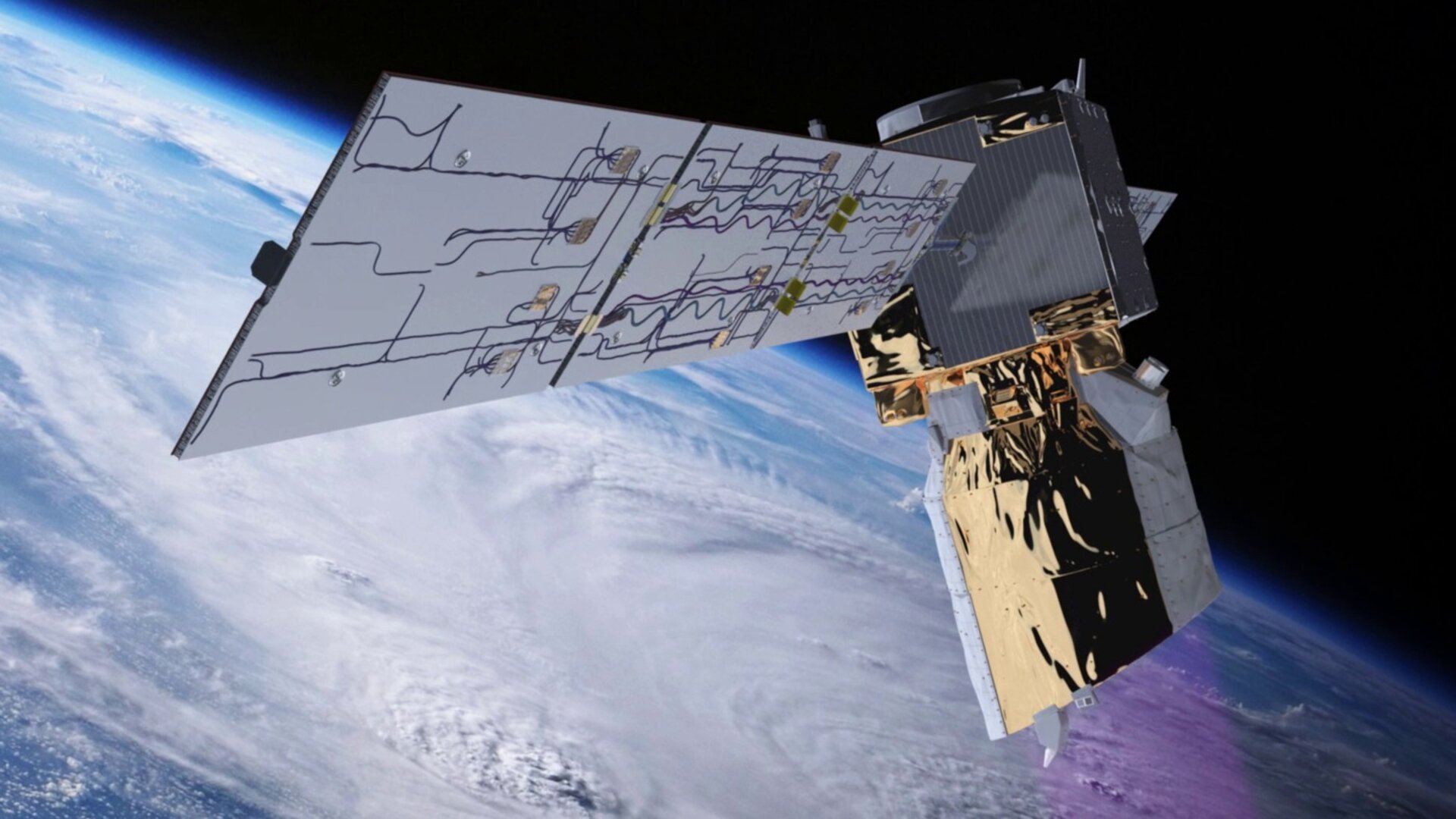
Access the video
Before ESA can declare that the data good enough to be included in forecasts, the data have to be carefully calibrated and validated. Part of this process has involved gathering measurements of wind, aerosols and clouds from the ground, aircraft and from other satellites to compare with measurements being delivered by Aeolus.
Also, in preparation for ingesting the data into their forecasts, a number of weather forecasting centres around the world have started to compare the Aeolus winds with their models.
So, after several months of calibration and validation exercises, around 100 scientists and engineers from universities, research institutes and weather centres in Europe, the US, Canada, Japan and China gathered recently at ESA’s centre of Earth observation in Italy to review the latest results from the Aeolus data investigations.
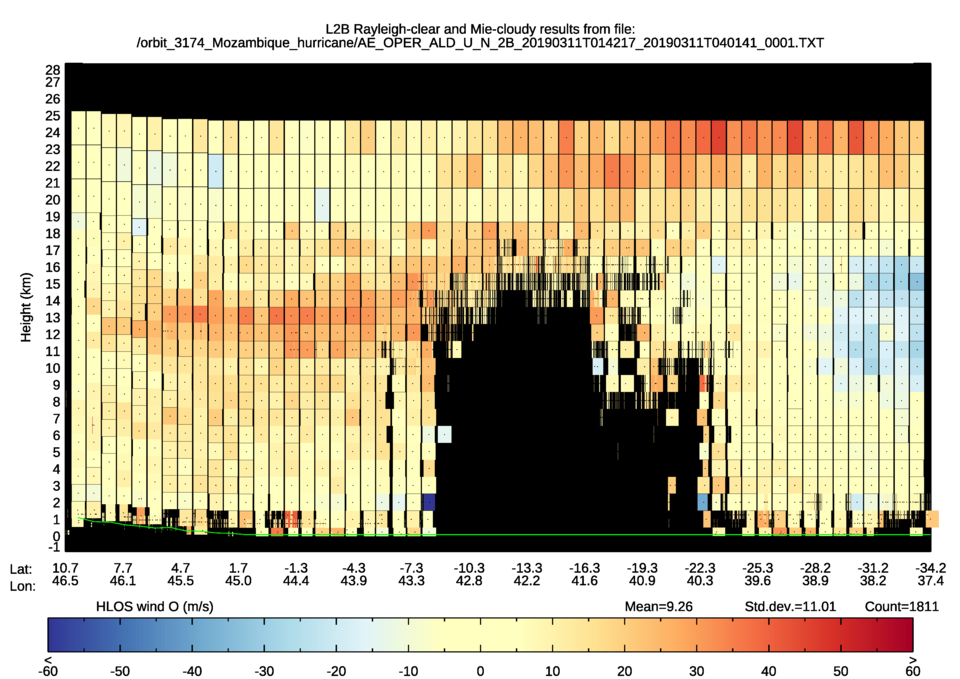
The European Centre for Medium-range Weather Forecast (ECMWF) and the German Weather Service (DWD) preliminary analyses showed that Aeolus winds are improving forecasts, particularly in the troposphere, which is the part of the atmosphere between the ground and about 16 km high.
Lars Isaksen, principal scientist at ECMWF, said, “Aeolus’ Aladin is the only instrument that provides wind profiles from space. Wind profiles, especially over remote areas, are very important for numerical weather prediction.
“ECMWF is heavily involved in processing, calibrating and validating the Aeolus wind data, and in just seven months after the satellite was launched, we and other weather centres have carried out numerous impact studies.
“These results are very promising and indicate that Aeolus winds will improve weather forecasts and help us better understand global wind circulation.”
Examples of results presented at the workshop included the storm that hit the UK and parts of Europe on 10 March and Cyclone Idai that devastated Mozambique, Malawi and Zimbabwe.
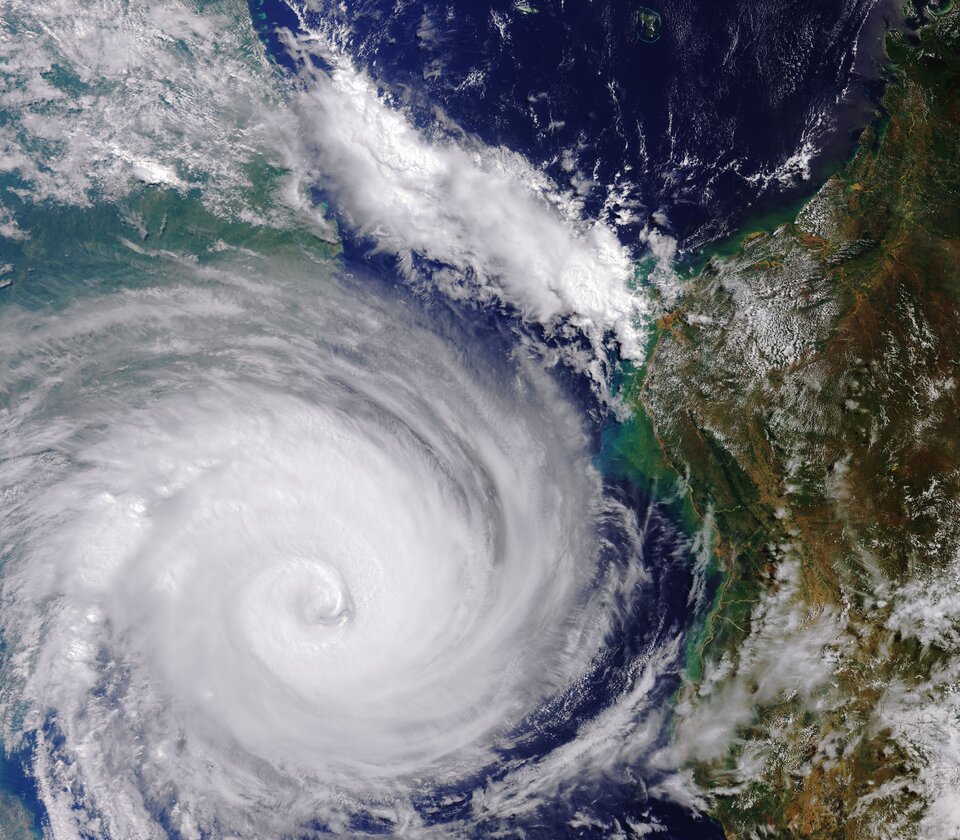
The value of having different satellite instruments observing the same weather event is important for gathering as much information as possible to improve the accuracy of weather forecasts and so that people affected by severe weather can take necessary action.
Tommaso Parrinello, ESA’s Aeolus Mission Manager, said, “We are really happy with the data Aeolus is returning. We also see how the mission can add complementary information to satellites carrying optical instruments such as the Copernicus Sentinel-3 and the satellites carrying radar such as the Copernicus Sentinel-1.
“While comparisons with ground-based instrumentation and weather models are currently ongoing to refine the calibration and data processing, we expect that the quality of the Aeolus data will be high enough around the end of this year – after which the data will be ready for scientific research and for weather forecasting.”


